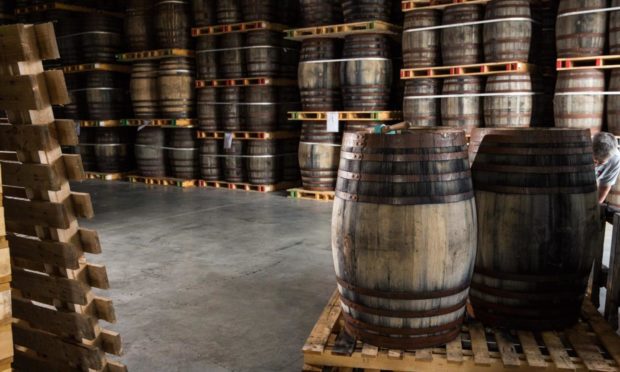Andy Clark reveals what it’s like to own your own cask of whisky and how other whisky fans can sign up for one, too.
It’s sitting there, racked up in the heart of the distillery, waiting for the perfect moment, when it will become 260 bottles of our very own, unique, cask-strength whisky.
For many a fan of a dram, owning your own cask is the ultimate aspiration, the thing that marks the time when our love affair with whisky becomes a long-term commitment.
I and three of my friends – colleagues who shared a love of whisky – took the plunge in 2016. In the previous autumn, we saw an ad from the yet-to-be-opened Harris Distillery, offering the first 200 casks for private ownership.
“Does anyone fancy it?” Sean joked – but quickly it became clear we were all up for this ultimate whisky journey. We signed up and six months later we got the news – our cask, No 110, had been filled.
It was only at that point, during our excited celebrations, that one of us asked the question: “What do you do with 260 bottles of whisky?”.
And therein lies one of the huge issues around cask ownership – why are you doing it?
For us, it’s about the love of the spirit, the joy of cracking open that first bottle on Luskentyre Beach, the dream of toasting my daughter’s marriage with my own whisky.
For others it’s about money. Cask ownership can be a seriously lucrative business – buy the right spirit, sell at the right time, and you can make a tidy profit.
And talking of money, let’s mention the other major issue around ownership – cost.
Granted, some rare casks sell for eye-watering sums, but it really needn’t cost the Earth. In our case, it works out at about £16 a month each over the 10-year maturation.
However, I appreciate not everyone is as lucky as us when it comes to a wee bit of spare cash – and for those people there’s another, altogether less scary, option.
It’s called Caskshare, and it’s basically the ultimate whisky syndicate. All you do is join up, peruse the casks, and buy as many shares in them as you like. Each share is equivalent to a single bottle and you simply reserve, pay (often less than £50 a share) … and wait.
When the dram is at its best, it will be bottled and posted out to you. I’ve signed up – and I hope I’ve forgotten about my order when it arrives. What a surprise that will be!
So if you’ve thought about cask ownership but decided it’s too impractical or pricey, maybe it’s time to think again.
The ultimate whisky dream isn’t as hard to come true as you might think.
For more information about Caskshare, go to caskshare.com
Andy Clark is author of the Dr@m whisky blog. For more go to dram-whisky.com
